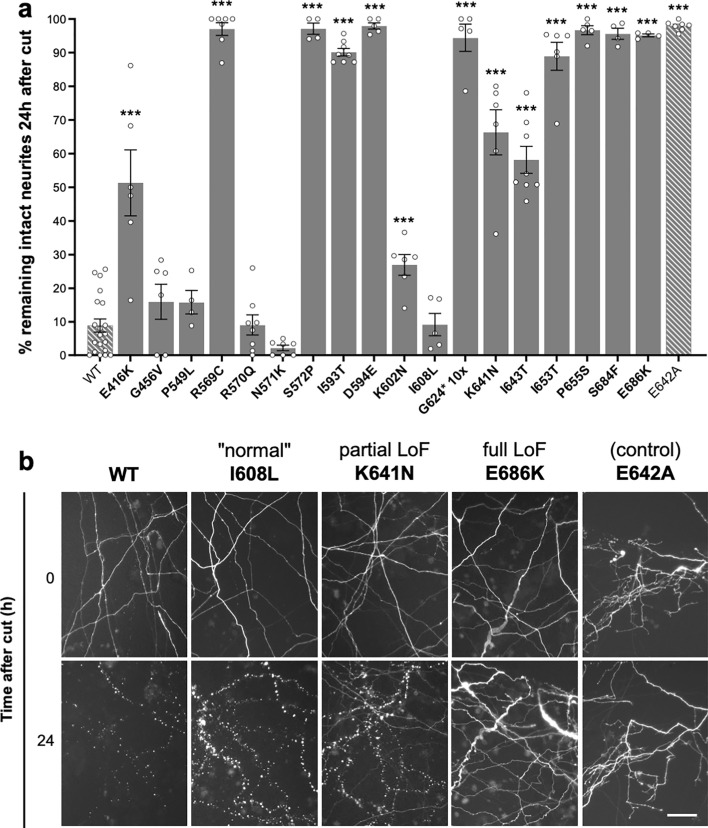Figure 4.
NADase LoF SARM1 TIR domain variants are unable to promote injury-induced neurite degeneration. (a) Sarm1-/- SCG neurons were microinjected with 2.5–5 ng/μl of SARM1 expression constructs (pCMV-Tag4 vector backbone) encoding untagged WT or variant/mutant human SARM1, together with 40 ng/μl pDsRed2 encoding DsRed to allow for visualisation of injected neurites. DsRed-labelled neurites were transected 48 h after injection. Degeneration was quantified by determining the percentage of intact DsRed-labelled neurites remaining 24 h after transection compared to at the time of cut (0 h). Data are presented as means ± SEM with individual data points plotted (n = 4–20), each representing average neurite survival from independent assays of multiple injected neurons. ***p < 0.001, multiple pairwise comparisons to WT SARM1 with FDR correction. Cut neurites in pDsRed2 only control injections did not undergo degeneration (~ 94.0 ± 1.2% neurite survival at 24 h). (b) Representative fluorescence images, as used for the quantification shown in part a, of transected, DsRed-labelled neurites of SARM1-deficient neurons injected with constructs expressing WT or variant/mutant SARM1 (as indicated) at 0 and 24 h after cut used for the quantification shown in part a. Controls (wild-type and enzyme-dead E642A SARM1) and three exemplary phenotypes are shown: I608L SARM1 resembling wild-type SARM1 ("normal"), K641N SARM1 displaying a partial LoF phenotype, and E686K SARM1 displaying full LoF. Scale bar, 50 μm. Separate immunostaining assays revealed that each variant, except for G624*, is expressed at a broadly similar level to WT SARM1 in the cell bodies of injected SCG neurons (Supplementary Fig. 1a) and immunoblotting of extracts of transfected HEK 293T cells confirmed that SARM1 variants of the expected size are expressed from the specific expression constructs used in the injection experiments (Supplementary Fig. 1b).

